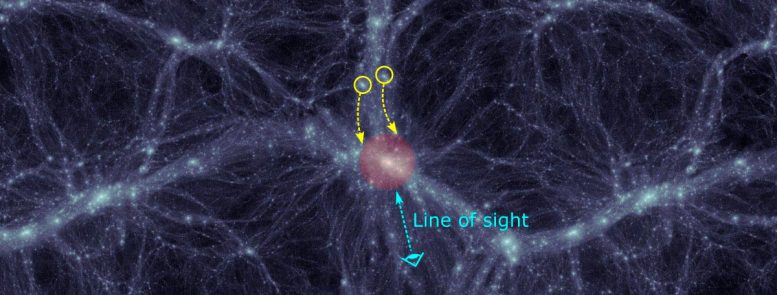
Galaxies falling into a massive galaxy group. Upon entering the group, these galaxies exhibit a blueshift in comparison to the central galaxy. Credit: Dr. Shihong Liao
A study using Sloan Digital Sky Survey data reveals that the Universe may be younger than estimated, challenging conventional cosmological models by analyzing satellite galaxy motions around massive groups.
In standard cosmological models, the formation of cosmological structures begins with the emergence of small structures, which subsequently undergo hierarchical merging, leading to the formation of larger systems. As the Universe ages, massive galaxy groups and clusters, being the largest systems, tend to increase in mass and reach a more dynamically relaxed state.
The motions of satellite galaxies around these groups and clusters provide valuable insights into their assembly status. The observations of such motion offer crucial clues about the age of the Universe.
By using public data from the Sloan Digital Sky Survey (SDSS), a research team led by Prof. Qi Guo from the National Astronomical Observatories of the Chinese Academy of Sciences (NAOC) analyzed the kinematics of satellite pairs around massive galaxy groups. The team’s findings suggest that the Universe may be younger than predicted by the LCDM model with Planck cosmological parameters.
This study was published in Nature Astronomy on January 22.
The researchers investigated the movement of satellite pairs positioned on the opposite side of massive galaxy groups by using their velocity offsets from the central galaxy along the line of sight. They discovered a notable excess of pairs exhibiting correlated velocity offsets compared to pairs displaying anti-correlated velocity offsets.
“The excess of correlated satellite pairs suggests the presence of recently accreted or infalling satellite galaxies,” said Prof. Qi Guo, the corresponding author of the paper.
This excess was also found in up-to-date cosmological simulations but the magnitude of this effect was considerably lower than in observations. The significant discrepancy between the observations and simulations implies that massive galaxy groups are younger in the real Universe.
“Since the age of the massive galaxy groups could be closely related to the age of the Universe, these findings consequently suggest a younger Universe compared to that derived from the cosmic microwave background (CMB) by the Planck Collaboration,” said Dr. Qing Gu, first author of the paper.
These findings present a challenge to the current cosmological model and may provide valuable insights into the Hubble tension problem.
Reference: “A younger Universe implied by satellite pair correlations from SDSS observations of massive galaxy groups” by Qing Gu, Qi Guo, Marius Cautun, Shi Shao, Wenxiang Pei, Wenting Wang, Liang Gao and Jie Wang, 22 January 2024, Nature Astronomy.
DOI: 10.1038/s41550-023-02192-6

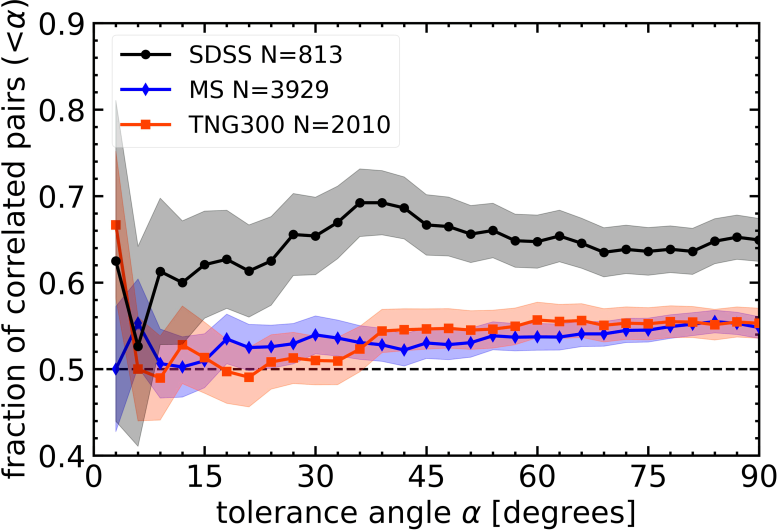
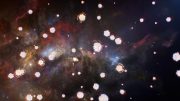
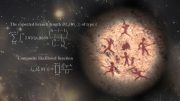
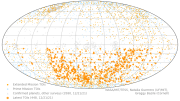


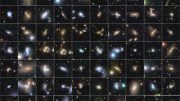


thank you
“In standard cosmological models, the formation of cosmological structures begins with the emergence of small structures, which subsequently undergo hierarchical merging, leading to the formation of larger systems.”
Penrose has his own “cyclic cosmology” and his own semi-quantum gravity theory based on Einstein’s GR, for what they’re worth here, but he overlooked the idea of supposing that cooled nucleons should acquire gravitational retro-reflectivity, making it clear that an oscillating universe is inevitable.
Newton and Einstein’s gravities have a lot in common at the low energy extreme, but that is also where quantum gravity should emerge, on cosmological scales. Two fundamental features of quantizing gravity will stand out within the cosmological vacuum of space:
1.) an intrinsic quantum carrier non-directional, intrinsic, wave-particle aspect, and
2.) a non-intrinsic quantum carrier directional, source-information-based (conserved massless energy carrying) aspect.
The simplest case of intrinsic wave-particle duality for quantum gravity follows as:
F(Quantum, spin1) = F(Classical)cos(2pi(r/w)), w = wavelength = 60kpc
F(Quantum, spin2) = F(Classical)(cos(2pi(r/w)))^2; cos(x^2) = cos(2x)+1
F(Quantum, spin2) = F(Classical)cos(2pi(2r/w)) + 1, w/2 = 30kpc
F(Classical) = GMm/r^2. (“^” indicates exponentiation).
Resent result from ALMA show this kpc-scale wavelength effect, mistaken for a dark matter signal.
There is no realistic way to simulate evolution of a barred spiral without this kpc-scaled wave effect by which a ring surrounding the core sculpts the core mass, lifting it into a transient off-plane top-heavy feature that eventually relaxes the core into a barred bulge. Tieing the kpc scale to fundamental force relationships between fundamental nucleons is supported by experimental values for proton-proton collective size and effective Electrostatic and Gravitational forces.
The simplest case of directionality in gravity information flows follows relies on a few simple principles, the first principle is that nucleons can solidify, meaning they can form solid units with some non-spherical aspects in consideration of their individual internal binding structures (bound tri-quark sytems), particularly those aspects that can support a binding lattice based only on gravity. Supposing each quark system maintains maximum separation in a bound tri-quark implies a disk-like focus for each quark’s system energy, namely tri-quarks will settle into self-intersecting mutually perpendicular disk-shaped locii, resembling a simple retro-reflector, extendable as face-centered lattice unit with attendant octahedral aspects. Evidence for the effect appears available in the roughly octahedral forms of cold-packed Bennu and Ryugu, and recently discovered bright linear ionized hydrogen structures seen around the MW core.
(Comments from “Larsson, “TheHeck,” and any other AI-bot personalities not welcome)
This problem can be solved by considering rotation of galaxy including Star Dynamics of rotating stars around the supermassive black hole at the center of galaxy.Here,treatment of dark energy is eleminated by rotation;while dark matter is considered like normal matter gravity acting at an with visible matter with natural rotation and orientation.
Does your comment relate in any way to the article’s discussion of the correlation of in-line motion for satellite pairs moving around a galactic center?
The young people should be more careful publishing papers against scientific common sense just based on online public resources miles away from real scientific instruments only to get 15 min of fame!
In a world of publish or perish, it seems scientific rigor is perishing.
Allow a few small corrections to my haste in piecing my previous comment together:
Two fundamental features of quantizing gravity will stand out within the cosmological vacuum of space:
1.) an energy carrier non-directional, intrinsic wave-particle aspect, and
2.) a non-intrinsic quantum energy carrier directional, source-information-based (conserved massless energy carrying) aspect.
The simplest case of intrinsic wave-particle duality for quantum gravity follows as:
Force(Quantum, spin1) = Force(Classical)cosine(2pi(r/w)) ….. where w = wavelength ~= 60kpc;
Force(Quantum, spin2) = Force(Classical)(cosine(2pi(r/w)))^2; cos(x)^2 = cos(2x) + 1;
Force(Quantum, spin2) = Force(Classical)cosine(2pi(2r/w)) + 1 …. w/2 ~= 30kpc;
Force(Classical) = GMm/r^2.
(“^” indicates exponentiation).
Recent results from ALMA data (“New Cosmological Constraints on the Nature of Dark Matter”
September 7, 2023 NAO Japan) show this kpc-scale wavelength effect, mistaken for a dark matter signal There is no realistic way to simulate galactic evolution to a barred spiral without this kpc-scaled wave effect by which a ring surrounding the core sculpts the core mass, lifting it into a transient off-plane top-heavy feature that eventually relaxes the core into a barred bulge. Tying the kpc scale to fundamental force relationships between fundamental nucleons is supported by experimental values for the proton’s effective size and its effective Electrostatic and Gravitational forces.
Force(Quantum, spin1) = Force(Classical)cosine(2pi(r/w))
This describes a radiated field generated by streams of gravity vector carriers (each vector is spin-1) with each carrier expressing ultra-slowiy rotating constant-length field vectors, rotating longitudinally (head-over-tail) with random longitudinal rotation planes. Randomness allow pairing of carriers with opposite rotation handedness, the vector pair summing to a cosine function.
The spin-2 version is based on carriers expressing bivector pairs replacing the vectors described above. A 1/2 rotation of orientation maps the bivector into itself, hence it’s a spin-2 particle.
A lack of pairing would dictate a complex exponential expression with sine and cosine components, instead of just a cosine term.
Your comment seems to offer no discussion about the topic of the article – the correlation of in-line motion for satellite pairs around galactic centers.
Of course the universe is younger than assumed. It doesn’t take science to prove that. It is common sense, the gift of God’s mind that blesses us to know that time isn’t determined by how long it takes for light to travel.
Time isn’t determined by how far a distance has been achieved based on measuring the speed of light!
Your comment is a non-sequitur. It has no meaning. Time in physics is NOT claimed to be based on the *measuring* of the speed of light. Time is based on how far along particular series of events has evolved related to a series of events with known constancy of rate of evolution (usually the movement of photos in a vacuum, going at a constant “speed of light”).
So what age do they think the universe is ?